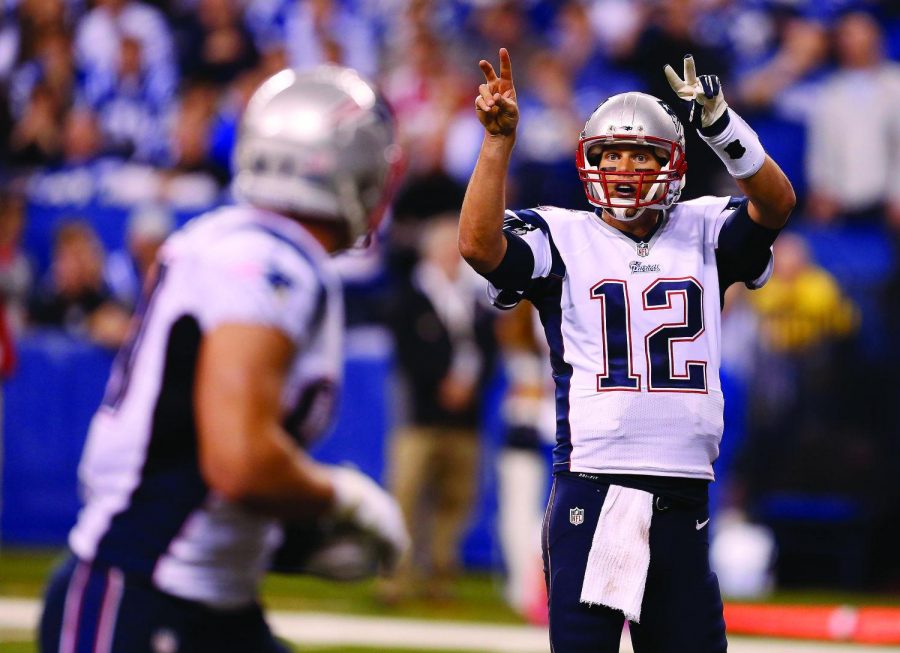‘Deflategate:’ Did Brady and the Patriots break the rules?
January 21, 2015
Of all the things I expected to hear incessantly in the weeks leading up to a New England Patriots vs. Seattle Seahawks Super Bowl – “Tom Brady’s experience,” “Bill Belichick,” “Legion of Boom” – I can’t say I imagined the level of football inflation to haunt my eardrums. But, here we are, and the Patriots are once again the villains of the National Football League for under-inflating their footballs (gasp!).
“Deflategate,” as social media sages termed the incident, became the biggest NFL news since the Patriots’ 45-7 romping of the Indianapolis Colts on Sunday. When reports first surfaced that the Pats deflated their footballs (with absolutely zero regard to the league rulebook, I might add), I laughed. I didn’t understand why it was such a big deal, and I still don’t. But I did some research, and here’s why “Deflategate” is a bit more than just lost air.
NFL rules stipulate that each football eligible for game use contains between 12.5 and 13.5 pounds of air per square inch (psi), which translates to each ball weighing between 14 and 15 ounces. Using an underinflated ball will give a passer better grip strength on the ball, which is helpful in a number of obvious ways, like being able to throw for more yards. Does it seem like a big deal for a team to violate the rules of ball inflation in a playoff scenario? In theory, yes.
In actuality, however, it’s not.
Reason being: We’re not talking about shorter quarterbacks like Drew Brees or Russell Wilson here. We are discussing Tom Brady, a man big enough to see over the steering wheel of his Prius without a booster seat. While I like to think he’s a dainty little Prius-driving schoolboy because he went to University of Michigan and wears Ugg boots, Tom Brady is not a dainty little schoolboy with dainty little schoolboy hands. He’s a 6-foot-4 man with, presumably, the hands of a 6-foot-4 man. And those hands have won him three Super Bowls already.
The psi of the football doesn’t matter because Tom Brady is simply a great football player.
Perhaps the best part of “Deflategate,” however, is the entertainment value in watching every Patriots opponent retroactively claim that they, too, were the victim of deflation. Leave it to the Baltimore Ravens to wait until after a report surfaces to say, “Uhh, yeah, we thought the balls weren’t pumped up enough, either. Yeah. We noticed that. We just didn’t say anything.”
Ravens linebacker Terrell Suggs may have commented also, but it’s unclear what the ineloquent player would actually have said.
League Dictator — er, sorry, Commissioner — Roger Goodell hasn’t decided the course of action from here. Technically, the Patriots could be disqualified from the playoffs and Indianapolis would take their place, but we all know this won’t happen because the Patriots are 1,000 times more ratings-friendly than the Colts.
Besides, Colts quarterback Andrew Luck already has plans to spend Super Bowl Sunday at a retirement home, bringing joy to the elderly of Indianapolis, because he’s just a good guy.
So, the Super Bowl will still be the Patriots vs. the Seahawks — or, rather, Tom Brady vs. the Seahawks.
Now that I’ve established that conclusion, I’m having another moment of clarity. I have a theory that the deflated balls were a setup. This was an elaborate scheme by the Patriots to gain an advantage in the Super Bowl.
Knowing they’d be playing the Seahawks and the undersized Wilson, the Patriots flattened their footballs. Brady then threw an interception or two intentionally, hoping the Colts would call them out, which they did. The League will now highly scrutinize the footballs used in the Super Bowl, and will probably inflate them to the high end of the psi range, putting small-handed Russell Wilson at a huge disadvantage.
Well played, New England. Well played.



